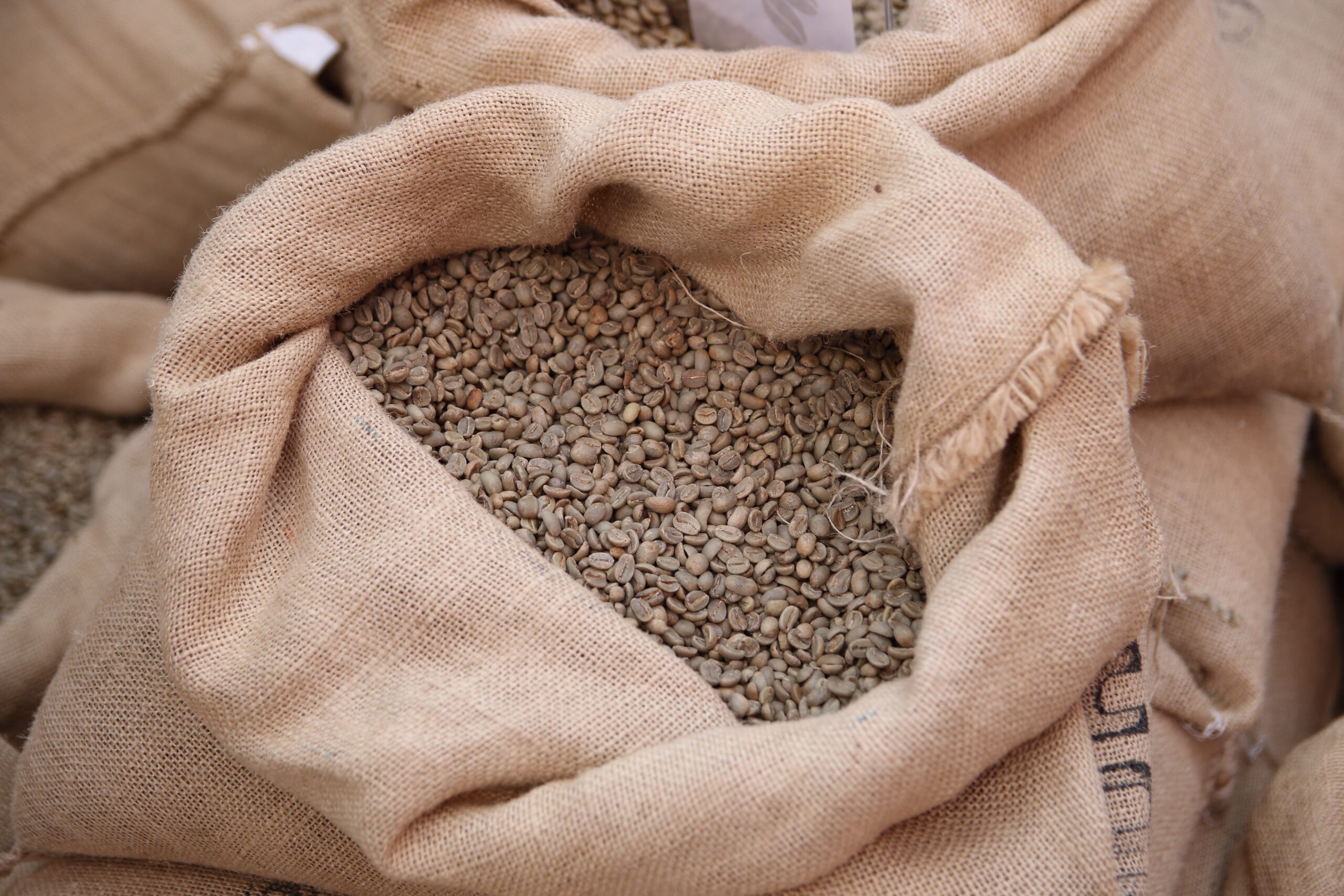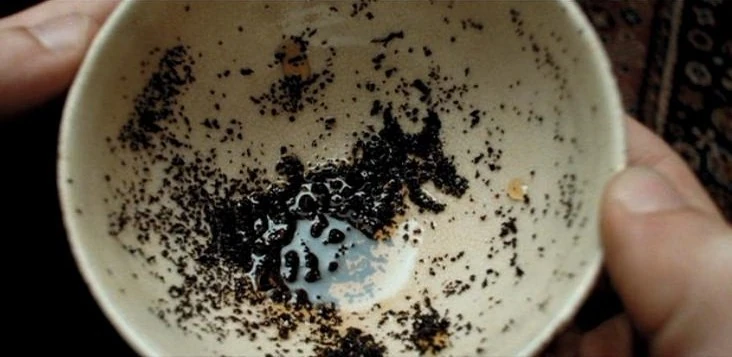
Which Coffee Origin Has More Caffeine? Here’s What You Need to Know
If you’re a coffee enthusiast searching for that perfect cup with a caffeine kick, you may be wondering: which coffee

If you’re someone who cares about sustainability and finding new ways to repurpose everyday items, you’ve come to the right place. Hessian sacks, burlap sacks, or hessian jute bags, are large woven sacks that are commonly used for packaging products such as rice, potatoes and, of course, coffee.
Images of large hessian sacks filled with coffee beans and printed with bold black letters representing their country of origin are synonymous with coffee roasting. This is natural because hessian sacks remain a popular choice for shipping specialty coffee around the world, but what happens to them after they serve this purpose?
Once opened, the hessian bags are no longer needed by the coffee merchant but thankfully there are a number of ways to repurpose these charming and rustic-looking coffee sacks to save them from going to waste. Their coarse yet breathable fabric is ideal for upholstery, and they are often printed with cool designs, which make for some totally unique DIY crafts.
From home décor to eco-friendly crafts, you’ll be amazed at the versatility of hessian sacks and the fun ways you can give life back to this (not so) redundant byproduct of the coffee industry. Here is a list of our favourite creative ways to reuse and upcycle hessian coffee sacks. Happy crafting!
Hessian sacks are traditionally used for packaging and transporting products such as coffee beans. Hessian has been a key packaging material for various industries for over 150 years and while the fabric has faced competition from alternative materials, its sustainable properties have allowed it to stay on top as a popular choice of packaging in an increasingly environmentally conscious society.
Although hessian sacks have several interchangeable names, the fabric from which they are made derives from the same plant that is primarily found in eastern and northeastern India. Hessian sacks, burlap sacks and hessian jute bags are all are made from organic, 100% biodegradable jute fabric from natural fibres found in the skin of the jute plant.
Hessian and burlap typically have a rough, course texture which means it is perfect for making sacks, rope and other rustic products whereas ‘jute’ is more commonly used to describe the most refined and high-quality fabric made from the jute plant, used to produce natural bags and accessories.
You can purchase hessian bags online from sustainable retailers, often donating the proceeds to localised coffee-growing community charities. You may also be able to purchase sacks from local coffee merchants, coffee roasters and coffee shops. Alternatively, you can find them online at a number of large DIY and home improvement retailing companies where any rips or tears may have been stitched, allowing endless ways to repurpose the hessian sacks.
Depending on how you intend to repurpose and reuse your hessian sacks, you may want to clean them. After all, they have travelled around the world and would probably benefit from a good scrub. To clean your hessian sacks, burlap sacks, coffee sacks or hessian jute bags we recommend hanging the sacks on a clothesline and giving them a good thrashing, inside and out, to reduce the amount of loose fibres and get rid of any remnants.
Handwash your coffee sacks in a bucket with laundry detergent and hot water or simply wipe with a cloth soaked in hot soapy water and hang on a clothesline to dry. Alternatively, you can place the coffee sacks into the machine on the spin cycle to remove the excess water. Avoid using a machine to wash the sacks because this may cause the print to fade and the material to fray.
Old hessian bags and coffee sacks are strong, breathable and biodegradable meaning they are a great option for DIY plant pots and lining garden hanging baskets. When potting a large plant, simply place the tree or plant directly into the hessian sack with the appropriate potting mix. The hessian fabric with allow drainage while keeping the soil moist and when your ready to transfer it, you can plant the whole thing (hessian bag included) as the roots can penetrate the fabric as they grow.
Another popular use for hessian sacks in the garden is to use them as compost covers. Hessian bags and jute sacks can help maintain a healthy environment by allowing optimal aeration and moisture levels for compost microbes to break down organic matter and garden waste. Either line your pallet compost bin with the hessian sacks or place over the top of your compost pile as a lid.
Large hessian sacks are the ideal solution for storing and preserving your home-grown garden produce. In fact, when you picture a ‘potato sack’ it’s more than likely that a hessian sack is what comes to mind. The lightweight and breathable properties of hessian sacks help to keep produce fresh but if you’re buying used hessian bags or coffee sacks, you should make sure any tears are stitched up to avoid anything falling out and allowing you to easily move and store your produce.
Coffee sacks are often marked with details of their contents and country of origin. Some of these designs are pretty awesome and make for some unique wall art. If this sounds like your kind of style, you can wash, press and frame your hessian sacks for a quirky addition to any home, office or public space. We think these would look extra special in a café or artisan coffee shop!
Whether you’re a novice or seasoned crafter, you can use a hessian sack as the base for a hessian jute bag or tote bag. Depending on your level of skill, you can keep things basic by simply adding a handle to the hessian sack or you can attempt something more complex like a large beach bag.
Try your hand at reupholstery and use hessian sacks to cover old furniture that has suffered a lot of wear and tear. Due to its hardwearing nature, hessian is a great material for DIY projects. A stool or chair is a good place to start, but you may need to recruit someone who knows what they are doing for more complicated pieces of furniture such as sofas and armchairs.
Why not use a hessian sack to make a bed or matt for your furry friend? You can make a dog bed by inserting a 4cm to 8cm thick pad of foam rubber into a hessian coffee sack and sewing the open end closed. These dog beds are much more affordable than those bought in pet shops, will last for ages and just need airing out on the washing line once a week.
Hessian cushions are another popular way to reuse hessian bags and coffee sacks. All you need to make these hessian cushion covers is some cushion stuffing, thick thread (or jute string) and two cut pieces of a hessian sack. Lay one piece on top of the other and stitch all the way round the edges, leaving a small hole in one corner to fill with cushion stuffing before carefully stitching the corner shut. These will look great at home or in a small independent coffee shop, representing the origin of the specialty coffee beans they use – customers will definitely appreciate this subtle touch.
For many, the sack race is a nostalgic part of childhood, and the tradition is one that is still loved by all today. Reusing hessian sacks for sack races on school or community sports days is not only fun, but it’s also an eco-friendly option. Hessian sacks are durable and strong so will last for years, can withstand the excitement of the race and are even suitable for parents to get involved!
Since it’s December, we thought we’d add this festive way to repurpose used hessian sacks to our list. Natural hessian jute bags are perfect for adding a rustic finish to your gifts. They are great for Santa sacks, Christmas stockings and they make loving decorations to place under the tree on Christmas morning. You could go the extra mile and personalise your hessian Christmas stockings by painting or printing your loved ones names onto the hessian sack and decorate with festive ribbon.
So, there you have it. We hope to have inspired you with these creative ways to upcycle old hessian sacks and coffee sacks that are not only stylish but kind to the environment.
Explore our exquisite range of specialty coffees.

If you’re a coffee enthusiast searching for that perfect cup with a caffeine kick, you may be wondering: which coffee

Ever finished a comforting cup of loose leaf tea and noticed the leaves left behind? For some, they’re simply remnants.